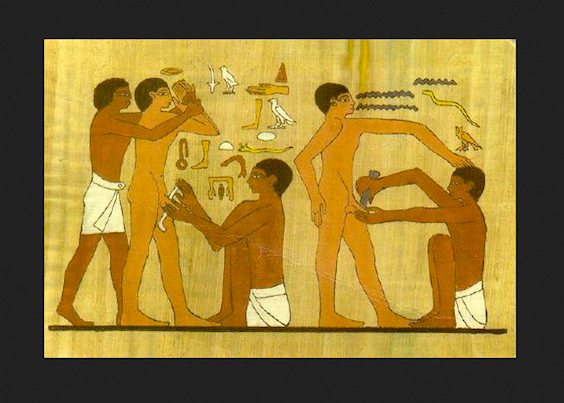
Have you ever wondered what the oldest illustration of a circumcision looked like? Of course you haven’t, but we’ll tell you anyway.
A bas-relief—a type of sculptural technique in which the sculpted elements remain attached to their background—dating back to 2,400 BCE and depicting two men being circumcised was found in an Egyptian tomb built for Ankhmahor, a high-ranking official during the sixth dynasty of Egypt. The tomb, located in Saqqara, is found in the pyramid compound of Teti, a Pharaoh from that time.
Hieroglyphic inscriptions relate what comes across as an oddly routine exchange of instructions:
“Sever, indeed, thoroughly,” one reads. “I will proceed carefully,” is replied.
Another panel cautions an assistant to “Hold him fast. Do not let him faint.” The assistant agrees: “I will do as you wish.” A careful surgery to be sure.
Historians guess that one or both of the men being circumcised were sons of Ankhmahor, who oversaw the king’s work, as well as the treasuries, and acted as priest. But they’re divided on why circumcisions were being done in the first place. Herodotus commented that Egyptians circumcised primarily for hygiene, noting that it was “better to be cleanly than comely.” Thanks for the tip.
JTA has documented Jewish history in real-time for over a century. Keep our journalism strong by joining us in supporting independent, award-winning reporting.





